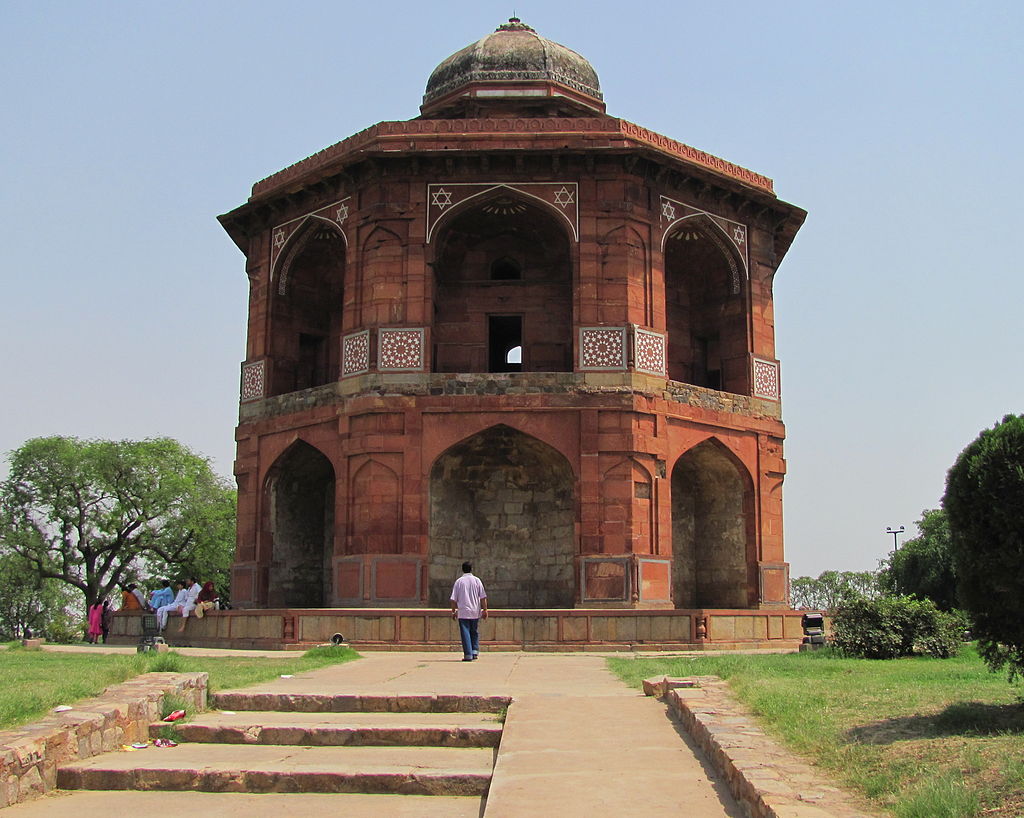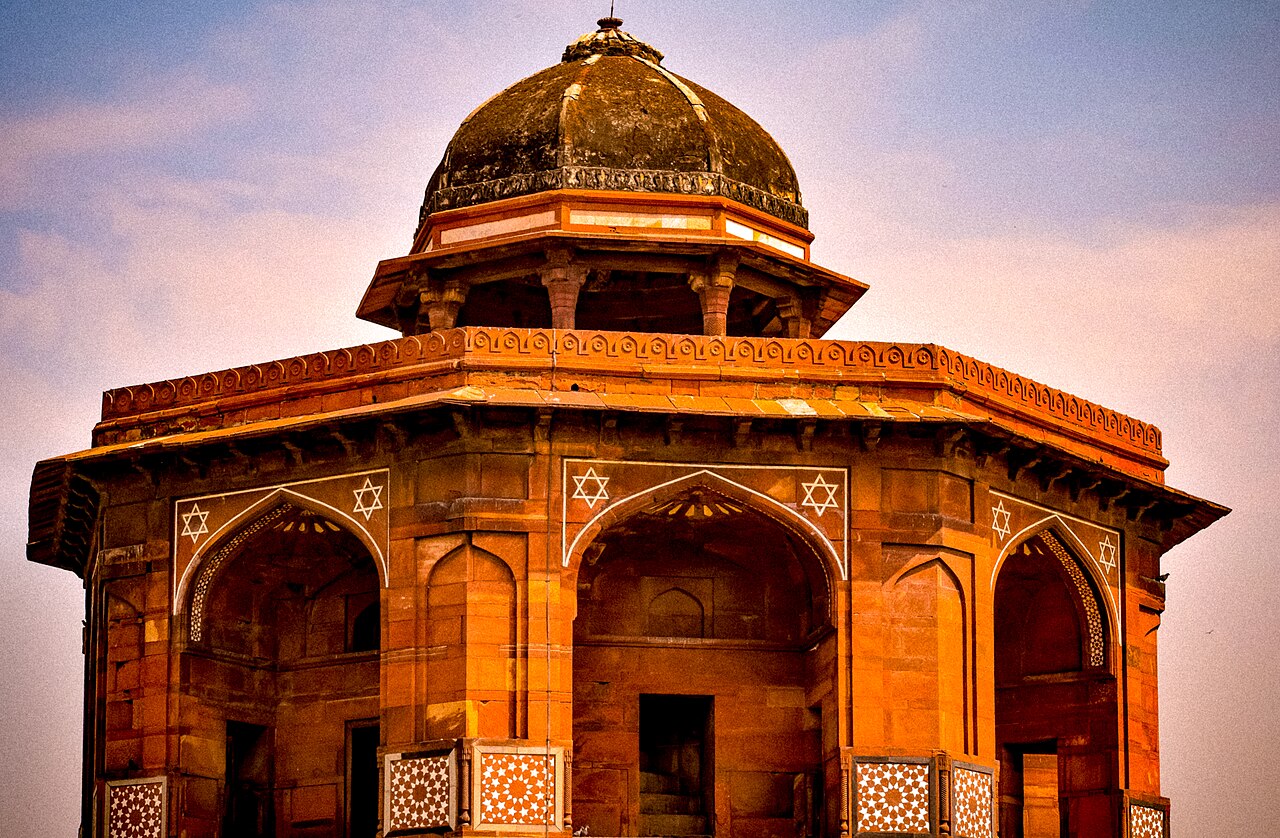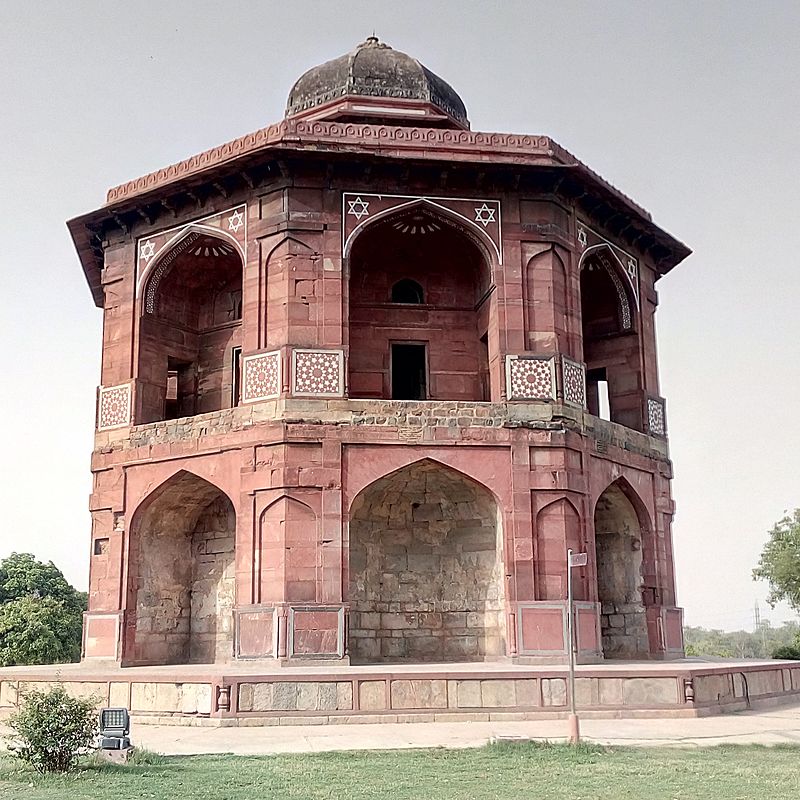


The Sher Mandal is a two-story octagonal structure in Delhi, built in red sandstone with marble inlay and intricate carvings, set within the Purana Qila (Old Fort). While the exact date of its construction remains uncertain, it's traditionally attributed to the time of the Afghan ruler Sher Shah Suri (r. 1540–1545), who overthrew the Mughal Emperor Humayun. The fort, and likely the Sher Mandal, were partially constructed as part of Sher Shah's plans to establish a grand capital. However, Sher Shah’s sudden death in 1545 interrupted his building projects. When Humayun regained the throne in 1555, he took over the unfinished structures and reportedly completed the Sher Mandal. Humayun is also thought to have used it as his personal library and observatory, where he studied astronomy and read books. The Sher Mandal is also historically significant for its association with Humayun's death. According to popular accounts, Humayun fell down its stairs in 1556 and sustained fatal injuries. The structure’s combination of Afghan and Mughal architectural elements—such as its red sandstone, intricate lattice work, and geometric patterns—reflects the transitional period in Indian architecture between the two empires.